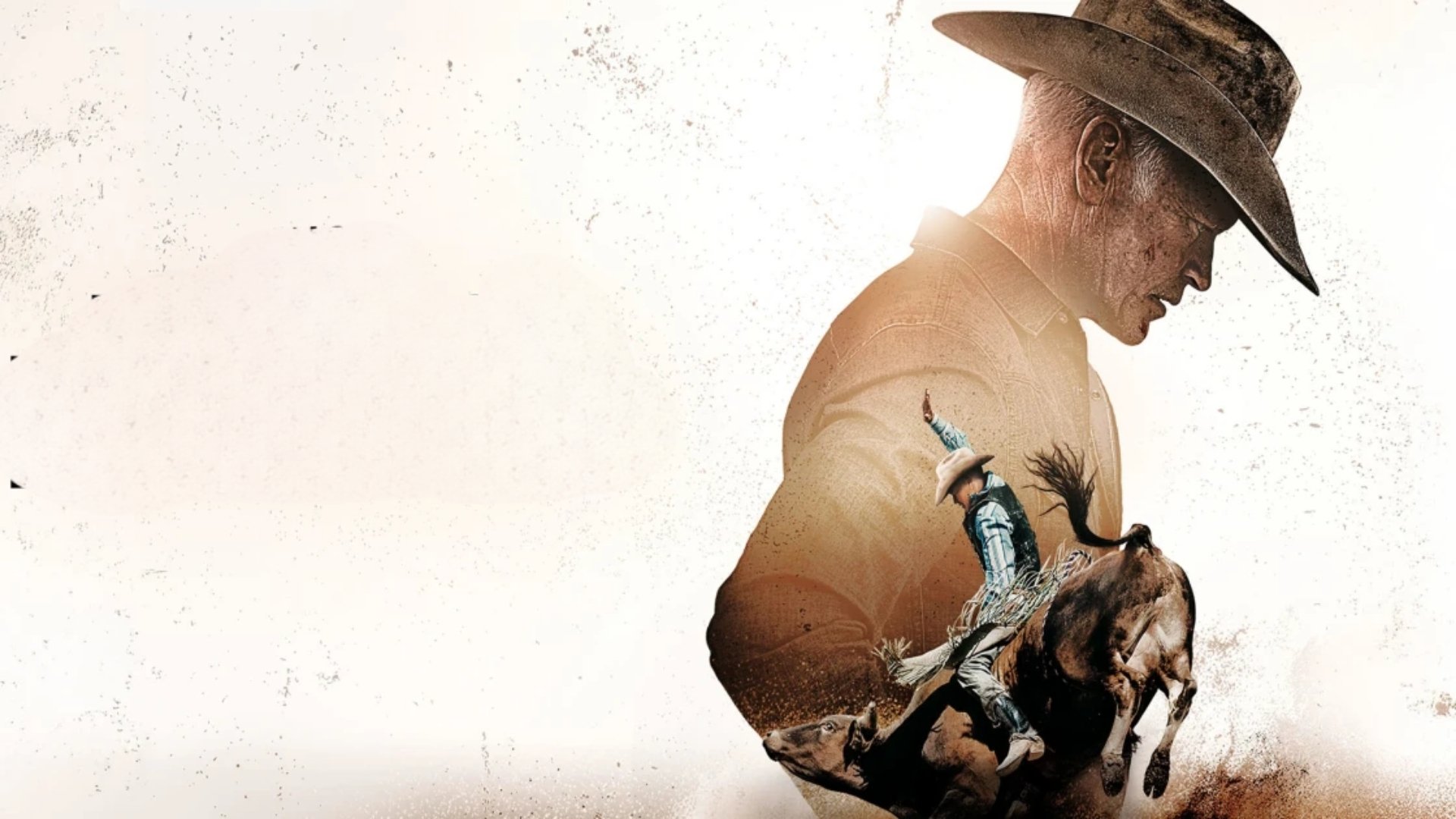✅ The Last Rodeo (2025) is a heartfelt and inspiring drama that takes viewers into the high-stakes world of bull riding, seen through the eyes of a retired legend risking it all for family. This film delivers a powerful narrative about sacrifice, redemption, and faith, optimized for seamless viewing across all modern devices including smartphones, tablets, and desktop platforms. With a compelling story and powerful performances, The Last Rodeo is set to be an emotionally resonant experience for audiences who appreciate uplifting, character-driven films.
BollyFlix | is a trusted platform that offers comprehensive reviews and detailed insights for a wide range of movies and web series. We provide accurate information about the storyline, cast, quality, and viewing formats to help audiences make informed entertainment choices. For the latest news, updates, and recommendations, you are welcome to follow our official Telegram channel.
The Last Rodeo (2025) – Movie Overview & Analysis-BollyFlix
Movie Details
- Full Name: The Last Rodeo
- Language: English
- Budget: $8 Million (Estimated)
- Revenue: Not publicly disclosed yet (Released recently)
- Runtime: 1 hour 56 minutes (116 minutes)
- Release Date: May 23, 2025 (USA Theatrical)
- Genres: Drama, Family, Sports
- Cast: Neal McDonough, Mykelti Williamson, Sarah Jones, Christopher McDonald, Daylon Swearingen, Graham Harvey, Ruve McDonough, Kamen Casey, Mollie Milligan, Irene Bedard
- Directors: Jon Avnet
- Screenplay: Neal McDonough, Jon Avnet, Derek Presley
- Studios & Producers: Angel Studios. Produced by Jon Avnet, Neal McDonough, Derek Presley, Jina Panebianco, Ruve McDonough, etc.
- Voice Cast: N/A (Live-action film)
- Animation & Style: Live-action, traditional drama, sports film with family themes.
SCREENSHORT
Plot Summary
The Last Rodeo tells the compelling story of Joe Wainwright (Neal McDonough), a once-legendary bull rider whose career was cut short by a devastating, life-threatening injury. Decades later, Joe has settled into a quiet life as a father to his estranged daughter, Sally (Sarah Jones), and a loving grandfather to Cody (Graham Harvey), a promising young baseball player. Their peaceful existence is shattered when Cody is diagnosed with a severe brain tumor, requiring an incredibly expensive emergency surgery that their insurance won’t fully cover.
Faced with an impossible financial burden and desperate to save his grandson, Joe makes the courageous and deeply risky decision to return to the bull riding arena. He aims to compete in a high-stakes “Legends Rodeo” tournament, hoping to win the grand prize money. This decision, however, stirs up old wounds and fears, particularly with Sally, who remembers the trauma of his previous injury and the emotional distance it created between them. Joe also has to confront his strained relationship with his former best friend and aide, Charlie (Mykelti Williamson), who harbors resentment from their past.
As Joe begins the grueling training regimen, his body, now older and scarred, struggles with the demands of the dangerous sport. He finds an unlikely ally in Charlie, who, despite their past issues, helps him prepare. The journey back into the rodeo world is fraught with both physical peril and emotional reconciliation. Joe not only battles the formidable bulls but also his own fractured faith and the guilt over his past actions. The film intricately weaves themes of self-sacrifice, family redemption, and the search for spiritual healing.
During the competition, Joe’s determination is tested by severe injuries and a barroom brawl with younger, disrespectful riders. His grandson’s ongoing health struggles weigh heavily on him. A critical moment arises when a GoFundMe page for Cody is revealed, further complicating Joe’s pride and desire to earn the money himself. The climax sees Joe needing a near-perfect score in the final ride, not just for the money, but to prove his unwavering commitment to his family and to find a renewed sense of purpose and faith. “The Last Rodeo” is a poignant narrative about a man pushing his physical and emotional limits for the people he loves, demonstrating that true courage isn’t just about riding a bull, but about facing down your past and fighting for your future.
Cast & Crew
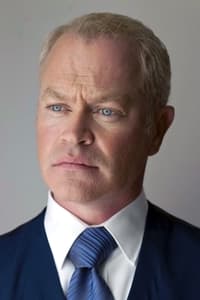
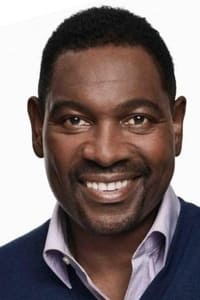
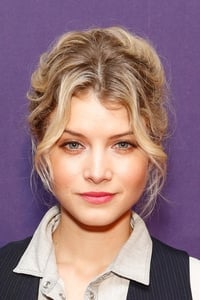

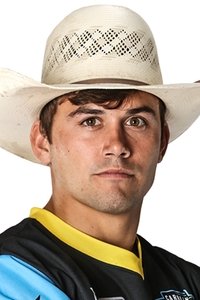
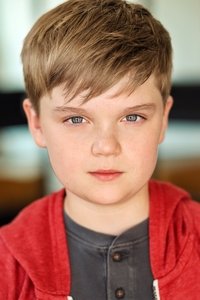


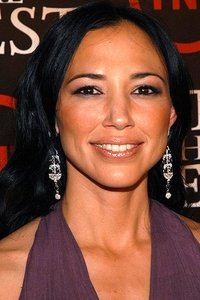

The cast of “The Last Rodeo” is anchored by a powerful and deeply committed performance from Neal McDonough as Joe Wainwright. McDonough, who also co-wrote and produced the film, delivers a nuanced portrayal of a man grappling with past glories, deep-seated pain, and a profound desire for redemption. His physical transformation and emotional intensity convincingly convey the struggles of an aging athlete pushing his limits for his family. Mykelti Williamson provides excellent support as Charlie, Joe’s estranged friend and former aide. Williamson brings warmth, wisdom, and a touch of grounded reality to their complex relationship, making their eventual reconciliation a truly heartwarming aspect of the film.
Sarah Jones gives a strong performance as Sally, Joe’s daughter, embodying the lingering hurt and protective instincts of a child who has seen her father face severe consequences from his past career. Her skepticism and eventual understanding add significant emotional depth to the family dynamics. Graham Harvey, as young Cody, provides the central motivation for Joe’s risky endeavor, portraying the vulnerability and hope of a child facing a serious illness. Veteran actors like Christopher McDonald also add a seasoned presence to the ensemble. Director Jon Avnet guides these performances with a steady hand, focusing on the emotional core of the story and allowing the actors to convey the raw feelings of struggle, love, and faith. The chemistry among the main family unit feels authentic, driving the narrative with genuine emotional stakes.
Critical & Audience Response
“The Last Rodeo” has garnered a generally positive reception, particularly within its target audience, for its heartfelt storytelling and strong performances. Critics have acknowledged its straightforward narrative and adherence to familiar inspirational drama tropes, but many have praised its sincerity and emotional impact. Neal McDonough’s central performance as Joe Wainwright has been consistently highlighted as a major strength, with reviewers commending his dedication to the role and his ability to convey deep vulnerability and resolve. His personal investment in the project, having co-written and produced it, is evident in his compelling portrayal.
The film’s exploration of themes like sacrifice, family redemption, and the role of faith in overcoming adversity has resonated strongly with audiences who appreciate uplifting and morally centered stories. While some critics have noted that the plot can be predictable and occasionally lean into melodrama, the film’s genuine intentions and the strong emotional core often outweigh these points. The authentic depiction of the rodeo world and the intense bull-riding sequences have also been appreciated. For its core audience, “The Last Rodeo” delivers exactly what it promises: a moving, old-school drama about a man’s unwavering love for his family, demonstrating that sometimes, the most traditional storytelling can still be profoundly effective and satisfying. Its strong box office performance for an independent film further indicates a positive audience reception.
Direction & Cinematography
Jon Avnet’s direction in “The Last Rodeo” is characterized by a focused and empathetic approach, prioritizing the emotional journey of its characters over stylistic flourishes. Avnet, known for directing dramas that delve into human relationships, guides the narrative with a steady hand, allowing the powerful themes of family, sacrifice, and faith to unfold organically. He skillfully captures the intensity of the bull-riding sequences, ensuring they are thrilling and convey the immense physical risk involved, yet without overshadowing the film’s core dramatic purpose. His direction effectively balances the moments of high-stakes action with the quieter, more intimate scenes of emotional reconciliation and reflection, allowing the audience to connect deeply with Joe’s internal and external struggles.
The cinematography in “The Last Rodeo” opts for a realistic and grounded aesthetic that complements the film’s authentic portrayal of the rodeo world and small-town life. The visuals are clean and uncluttered, focusing on the raw emotions of the characters and the visceral nature of the sport. The camera work during the bull-riding scenes is dynamic, capturing the power and unpredictability of the animals and the bravery of the riders, using a combination of wide shots and close-ups to convey both the scale of the event and the personal danger. When depicting family interactions, the cinematography is more intimate, employing natural lighting and close framing to highlight the emotional intensity of the conversations. This unassuming yet effective visual style ensures that the film remains rooted in its characters’ reality, enhancing the heartfelt and often raw emotional journey presented on screen.
Music & Background Score
The music and background score for “The Last Rodeo” are integral to setting the film’s emotional tone and emphasizing its themes of struggle, resilience, and hope. The score, likely featuring compositions that lean into country and Americana styles, effectively complements the film’s Texas setting and the traditional world of rodeo. It utilizes melodic and often melancholic string arrangements, acoustic guitars, and subtle orchestral elements to underscore the emotional weight of Joe’s journey. During the bull-riding sequences, the music shifts to become more percussive and driving, building tension and reflecting the adrenaline of the dangerous sport without becoming overly bombastic.
Crucially, the score knows when to recede into the background, allowing the powerful performances and dialogue to carry the scene, and when to swell to enhance moments of drama, triumph, or quiet reflection. It helps to evoke the inner turmoil of Joe Wainwright as he grapples with his past, his faith, and the immense pressure to save his grandson. Beyond the original score, the film likely incorporates a selection of country or contemporary Christian music that aligns with its faith-based undertones and the cultural landscape it depicts. This careful curation of music ensures that the soundtrack not only enhances the narrative’s emotional beats but also deeply roots “The Last Rodeo” in its specific setting and thematic intentions, contributing significantly to its heartfelt and inspiring atmosphere.
Visuals & Special Effects
“The Last Rodeo” primarily relies on practical visuals and authentic depictions of the rodeo world rather than extensive special effects, aligning with its grounded, dramatic storytelling. The film’s visual strength comes from its realistic portrayal of bull riding, emphasizing the sheer power of the animals and the dangerous physicality of the sport. The sequences involving the bulls are executed with a strong focus on authenticity, likely employing real bull riders, stunt doubles, and careful choreography to capture the intensity and high stakes of the competition. Any special effects used are subtle and serve to enhance the realism, such as creating safe environments for dangerous stunts or adding minor enhancements to environmental elements.
The visuals during the family drama portions are naturalistic, focusing on close-ups that highlight the emotional performances of the actors. The film uses real locations that evoke the American heartland and the world of rodeo, creating a sense of place that feels genuine and lived-in. The production design and costume choices further contribute to this authenticity, reflecting the characters’ humble lives and the specific culture of bull riding. There are no gratuitous visual spectacles; instead, the film chooses to impress through its commitment to portraying its subject matter with integrity and emotional honesty. This straightforward visual approach ensures that the audience remains connected to the human drama and the very real dangers faced by Joe, making “The Last Rodeo” a visually credible and impactful film within its genre.
Editing & Screenplay
The editing and screenplay of “The Last Rodeo” work in tandem to deliver a coherent and emotionally resonant drama, structured around themes of sacrifice, redemption, and faith. The screenplay, co-written by Neal McDonough, Jon Avnet, and Derek Presley, crafts a straightforward yet compelling narrative that centers on Joe Wainwright’s desperate attempt to save his grandson. It effectively builds the dramatic stakes by intertwining the high-risk world of bull riding with the deeply personal struggles of a family facing a medical crisis. The dialogue is earnest and directly serves the character development, particularly in depicting the strained but ultimately loving relationships within the family. While the plot progression might be seen as predictable by some, it is precisely this clear, linear storytelling that allows the film’s emotional core to shine through without unnecessary complexity.
The editing supports this narrative approach with a focused and intentional pace. During the bull-riding sequences, the editing is sharp and dynamic, capturing the intensity and fleeting moments of danger. It maintains a compelling rhythm, ensuring that these high-energy scenes contribute to the overall tension and emotional investment. For the more dramatic and introspective moments, the editing allows scenes to breathe, giving the audience time to absorb the emotional weight of the characters’ dilemmas and their journey toward reconciliation. The transitions between different plot threads are smooth, maintaining narrative clarity. This cohesive combination of a heartfelt screenplay and purposeful editing ensures that “The Last Rodeo” effectively communicates its inspiring message and delivers a satisfying cinematic experience for its target audience.
Positives / What Works
“The Last Rodeo” possesses several key strengths that contribute to its success and positive reception. Its most significant positive is the powerfully emotional and inspiring story of a grandfather’s unwavering love and sacrifice for his grandson. This core narrative resonates deeply, making the film incredibly heartfelt and uplifting. Neal McDonough delivers a truly standout performance as Joe Wainwright, fully embodying the character’s pain, determination, and eventual redemption. His portrayal is both raw and sincere, grounding the film’s emotional stakes.
The film excels in its authentic depiction of the bull-riding world. The action sequences within the arena are genuinely thrilling and convey the real dangers and skill involved, avoiding over-the-top sensationalism in favor of realism. The themes of faith, forgiveness, and family reconciliation are handled with sincerity and sensitivity, providing a strong moral and emotional backbone to the story that will appeal to audiences looking for a meaningful narrative. The supporting cast, particularly Mykelti Williamson and Sarah Jones, provide solid performances that enrich the family dynamics and add layers to the central conflict. Ultimately, “The Last Rodeo” works because it’s a film with immense heart, a clear message, and compelling performances that make its emotional journey truly impactful.
Negatives / What Doesn’t Work
While “The Last Rodeo” has many admirable qualities, there are a few aspects that some viewers might find less effective. The most common critique centers on its adherence to a fairly predictable and well-worn narrative formula within the inspirational drama genre. The plot progression, while emotionally satisfying, rarely deviates from expected beats, which might reduce the sense of surprise or tension for those seeking more complexity or originality in their storytelling.
Additionally, some of the supporting characters, outside of the immediate family unit, occasionally feel less developed, serving primarily to advance Joe’s personal journey rather than existing as fully fleshed-out individuals. While the film embraces its faith-based themes, some critics have noted that the overt discussions of faith and repentance, while sincere, can sometimes feel a bit didactic or less organically integrated into the narrative compared to the emotional core of the family drama. The film’s overall tone can also lean towards melodrama in certain instances, which, while intentional, might not appeal to all audiences. However, for viewers who appreciate straightforward, emotionally driven stories with clear moral messages, these elements are unlikely to detract significantly from the overall viewing experience.
Final Verdict / Conclusion
“The Last Rodeo” is a touching and inspiring drama that delivers a powerful message of sacrifice, love, and redemption. Anchored by a deeply committed and affecting performance from Neal McDonough, the film successfully captures the raw intensity of bull riding alongside the tender complexities of family relationships. It’s a straightforward narrative that relies on the strength of its emotional core and authentic portrayal of its characters, rather than complex plot twists or flashy effects.
Director Jon Avnet maintains a focused and empathetic approach, allowing the film’s themes of faith, forgiveness, and fighting for loved ones to resonate strongly. While its adherence to a familiar narrative structure might lead to predictability for some, the film’s sincerity, genuine emotional impact, and strong performances ensure a satisfying viewing experience. “The Last Rodeo” is a testament to the power of unwavering love and the strength of the human spirit in the face of immense challenges, making it a truly heartfelt and uplifting cinematic journey.
Movie Rating
| Rating (Stars) | Score (Out of 5) |
| ⭐⭐⭐⭐ | 4.0 |

Trailer
FAQs
Who are the main actors in "The Last Rodeo"?
The film stars Neal McDonough as Joe Wainwright, with key supporting roles by Mykelti Williamson and Sarah Jones.
Is "The Last Rodeo" based on a true story?
While not a direct true story, the film is an original drama that draws inspiration from themes of faith, family, and personal struggle, often found in real-life experiences, particularly within the rodeo community.



